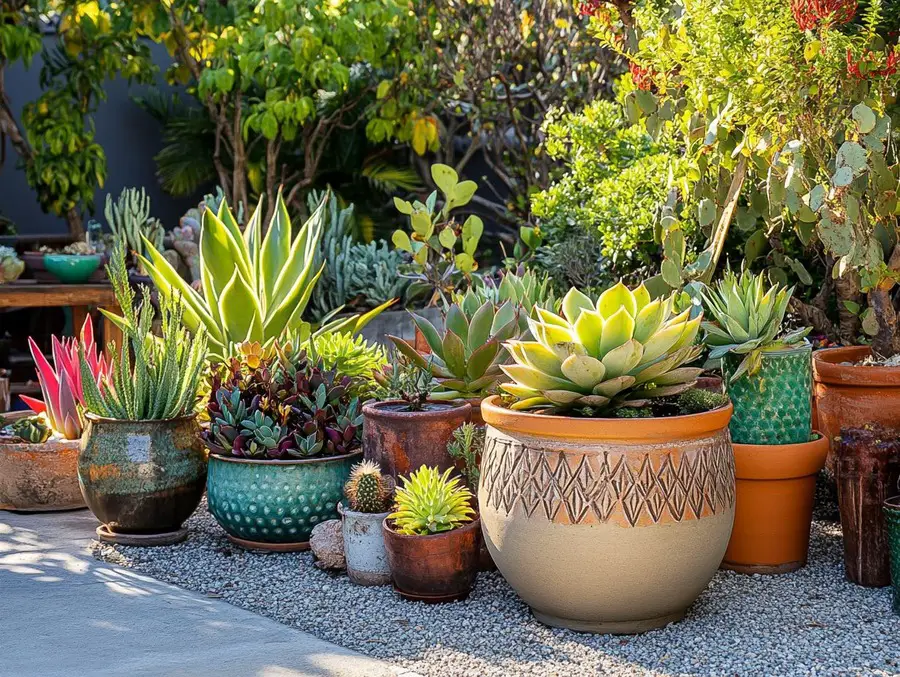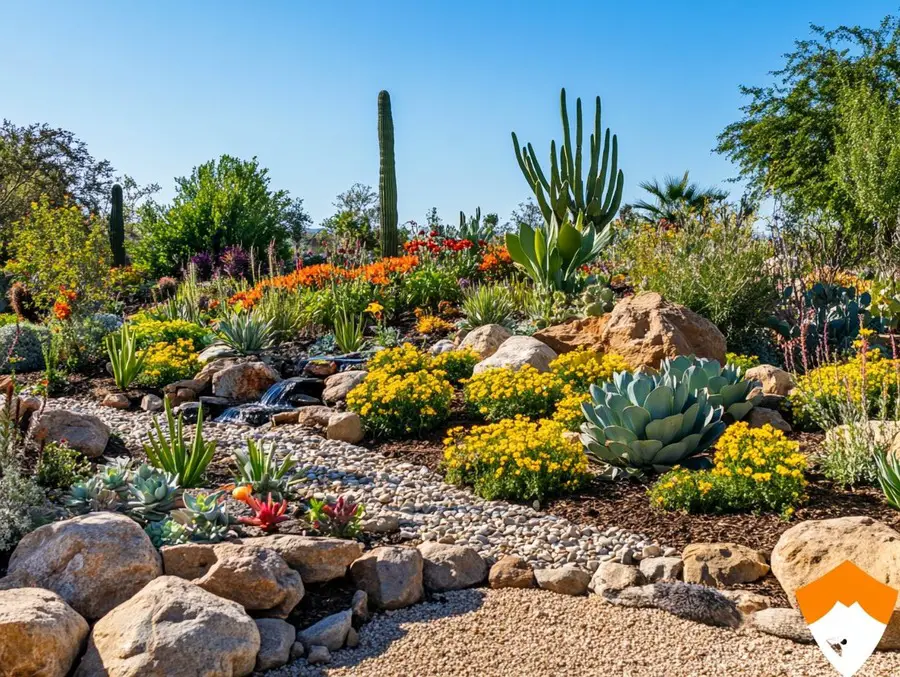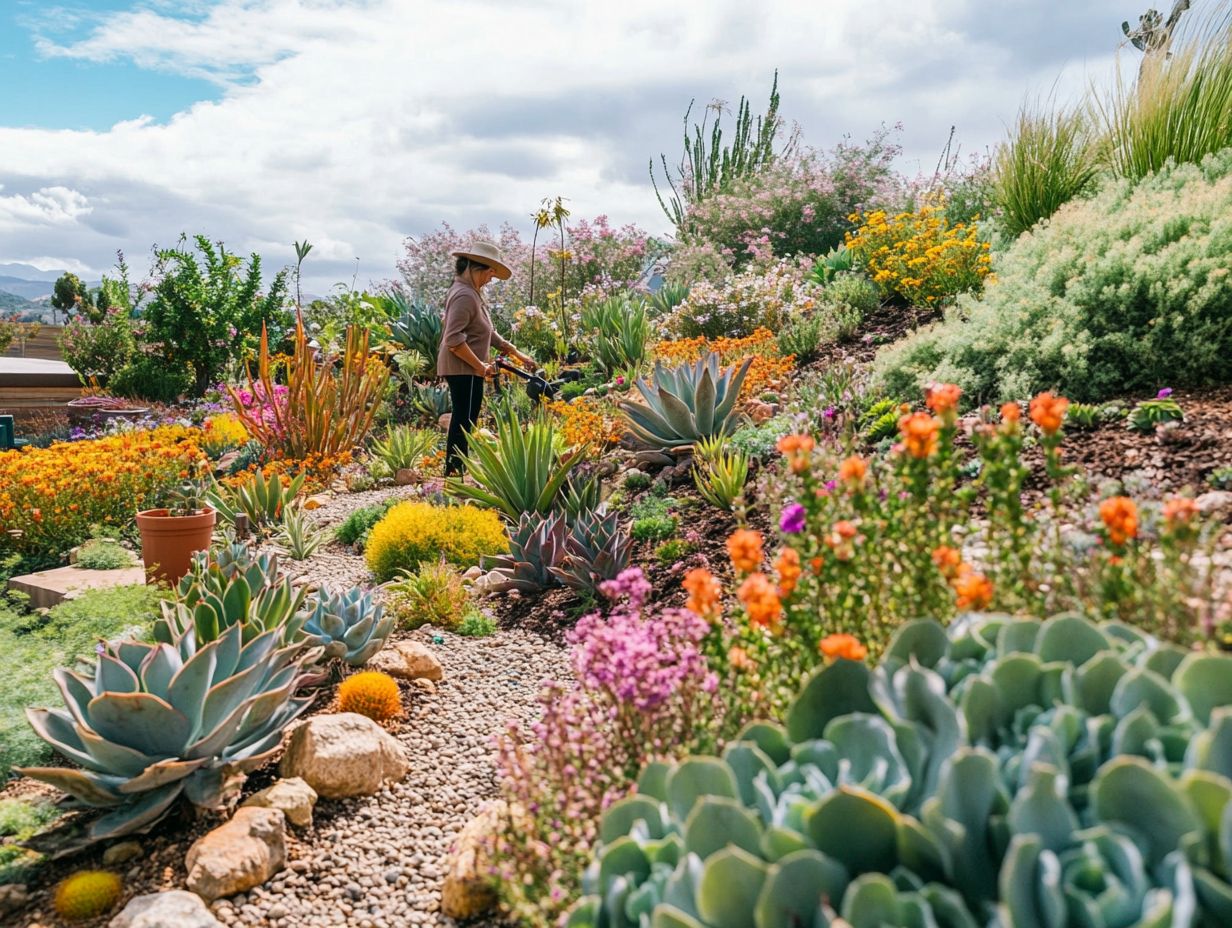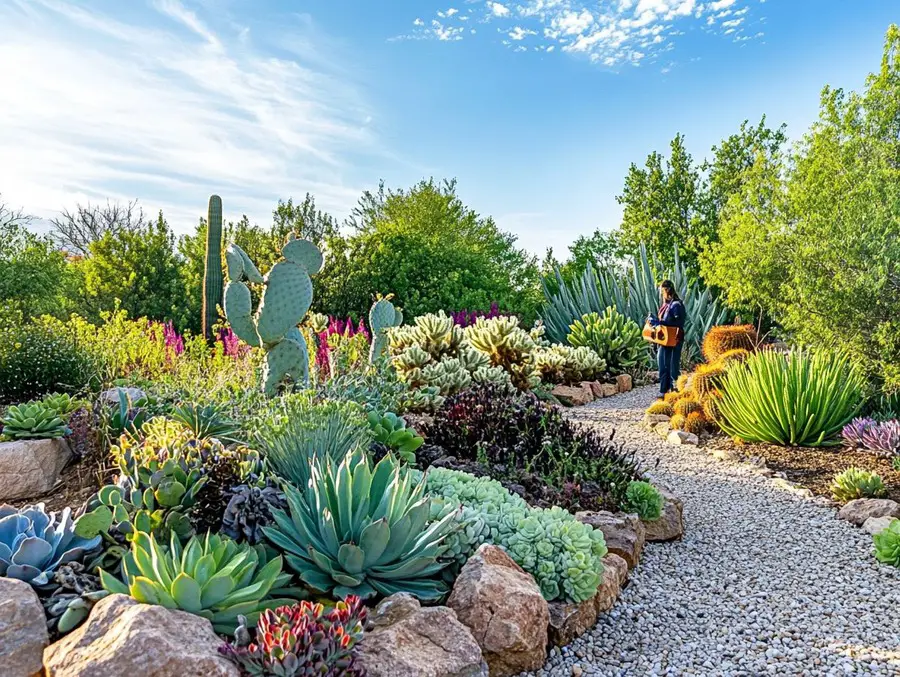We use affiliate links. If you purchase something using one of these links, we may receive compensation or commission.
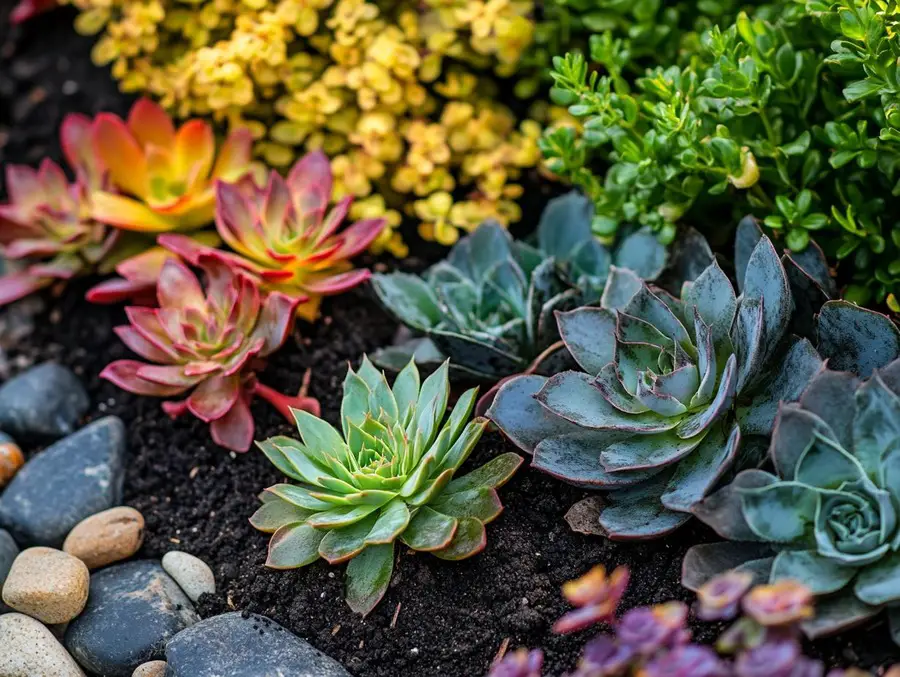
Soil improvement for xeriscaping is key to creating a thriving, low-maintenance landscape.
Poor soil can struggle to retain moisture and nutrients, making it tough for drought-resistant plants to establish strong roots.
But with the right soil amendments like compost, mulch, and organic matter you can boost soil health, improve water retention, and set your xeriscape up for long-term success.
Soil Improvement for Xeriscaping
Key Takeaways
- Soil improvement for xeriscaping enhances water retention, boosts nutrients, and strengthens plant roots.
- Adding compost, mulch, and organic matter improves drainage while supporting drought-tolerant plants.
- Proper soil amendments create a low-maintenance, eco-friendly landscape that conserves water and promotes sustainability.
Soil Improvement for Xeriscaping: Healthier Soil, Thriving Plants
Xeriscaping isn’t just another landscaping trend, it’s a smart, sustainable approach that focuses on water conservation and being environmentally responsible.
This method comes with a bunch of benefits, from helping the environment to saving you some cash.
To nail xeriscaping, you’ve got to understand soil, so let’s dive into the different types of soil and how you can improve them with compost and mulch.
You’ll also want to keep some essential maintenance tips in your back pocket to ensure your xeriscaped garden stays healthy and thriving.
Get ready to uncover the secrets to creating a beautiful, drought-tolerant landscape that’s good for both your home and the planet.
What is Soil Improvement for Xeriscaping?
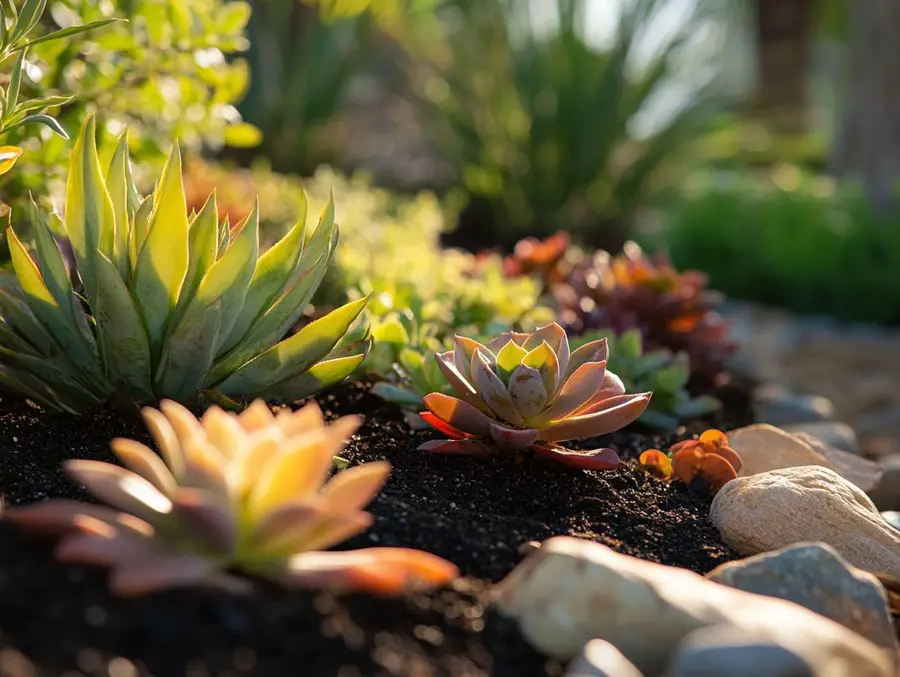
Xeriscaping is a fantastic way to create a sustainable landscape that cuts down or even eliminates the need for irrigation, especially if you’re in an arid or semi-arid area.
This method is all about using drought-resistant plants, native flora, and smart water management techniques to craft beautiful gardens that can thrive with minimal water.
By focusing on soil health and moisture retention, xeriscaping helps promote ecological balance and biodiversity, turning your landscape into a lush haven.
Once you grasp the principles of xeriscaping, you can design an attractive and eco-friendly outdoor space that needs less maintenance and is more resilient to climate changes.
You really can’t underestimate the importance of this approach.
It conserves water, something that’s getting scarcer by the day in many places, and supports local wildlife by creating a habitat with native species.
Key practices include choosing plants like:
- lavender
- agave
- ornamental grasses
These are perfect for surviving those long dry spells.
Using techniques like mulching, rainwater harvesting, and strategically placing rocks and soil to hold onto moisture can significantly boost the sustainability of your garden.
By embracing xeriscaping, you’re not just sprucing up your space.
You’re also doing your part for a greener planet while enjoying a thriving, low-maintenance garden.
Benefits of Xeriscaping
Xeriscaping comes with a whole bunch of benefits that can boost not just the beauty of your landscape, but also its environmental impact and sustainability.
By using xeriscaping techniques, you can really cut down on water usage, lower your maintenance costs, and support local biodiversity by incorporating native plants and organic practices.
The perks of adopting xeriscaping go way beyond just looking good.
It also helps improve soil health and supports environmental sustainability.
It’s a perfect choice for anyone who wants to create eco-friendly outdoor spaces.
This approach encourages you to conserve natural resources while promoting healthy ecosystems and adapting to climate change.
Environmental and Financial Benefits
Xeriscaping is a smart way for you to boost the environmental sustainability of your landscape while also saving some serious cash in the long run.
By embracing xeriscaping practices, you can dramatically reduce your water usage, which means lower water bills especially if you live in an area where water is a precious commodity.
This approach involves grouping plants based on their water needs and using mulch to lock in moisture, which helps you avoid those rising costs associated with traditional landscaping.
With less upkeep required for your landscape, you’ll see savings on maintenance over time.
This supports a thriving ecosystem, but it also fits perfectly with today’s trends in responsible environmental stewardship.
It’s a win-win for your property and the planet!
Understanding Soil for Xeriscaping
Understanding soil is key to nailing your xeriscaping project because it plays a huge role in plant selection and the overall health of your garden.
Different soil types can impact water retention, nutrient availability, and drainage, all crucial factors for creating a resilient landscape.
By paying attention to soil health, structure, and composition, you can boost moisture retention and encourage healthy root development in your drought-resistant plants.
Adding organic matter like compost and mulch into your soil can really ramp up its fertility, helping to create a thriving ecosystem that supports biodiversity and conserves natural resources.
Types of Soil and their Characteristics
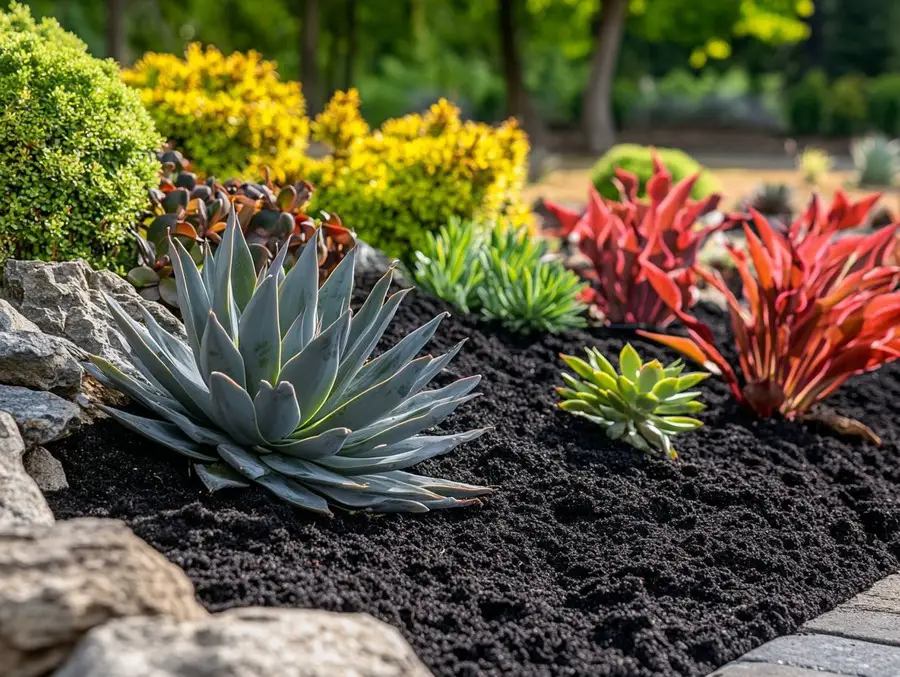
Different types of soil come with their own quirks that can really affect your xeriscaping efforts, like how well it retains water, how it drains, and what nutrients are available.
Take loamy soils, for example; they find the sweet spot between clay and sandy soils.
They drain well while still holding onto enough moisture for a variety of plants.
This means you can grow a wider array of drought-resistant beauties, like lavender and succulents.
On the other hand, rocky soils might throw some challenges your way, but they can also be a great fit for certain drought-tolerant species, think native grasses and ornamental rocks that really thrive in those conditions.
By looking not just at the type of soil you have but also at its drainage systems and overall health, you can tweak your xeriscaping approach.
This way, you’re setting yourself up for optimal plant growth and ensuring your landscape stays both gorgeous and sustainable.
Methods for Improving Soil for Xeriscaping
Improving soil quality is key to successful xeriscaping, as it directly affects plant health and the overall resilience of your garden.
By using various soil enhancement techniques, like adding compost and mulch, you can improve the soil structure, nutrient retention, and moisture management.
This, in turn, supports the growth of drought-tolerant plants.
Incorporating organic matter boosts soil fertility and encourages beneficial microorganisms, which help with erosion control and contribute to an ecologically balanced landscape.
When you understand the importance of soil amendments, you’ll be well on your way to cultivating a vibrant xeric garden that thrives even in arid conditions.
Amending Soil with Compost and Mulch
Amending your soil with compost and mulch is a key practice in xeriscaping that really boosts soil fertility and moisture retention.
These additions don’t just create a happy home for a variety of drought-resistant plants.
They also encourage healthy microbial activity in the soil.
When you incorporate compost, you can significantly enrich the nutrient content, which promotes better plant growth and resilience.
Mulch does its part by helping regulate the soil temperature, creating a more stable environment for your plant roots to expand and thrive.
The combination of compost and mulch leads to a flourishing ecosystem where your plants and soil work together seamlessly, conserving water and reducing your reliance on chemical fertilizers.
Using Drought-Tolerant Plants
Selecting the right drought-tolerant plants is crucial for your xeriscaping project.
These plants are designed to thrive in low-water conditions.
By adding native varieties and xeriscape plants to your landscape, you’re doing your part for water conservation and also supporting local biodiversity, and promoting environmental sustainability.
When you understand the characteristics of various drought-resistant species, you can create a vibrant garden that flourishes even in arid conditions, ensuring healthy plant growth while keeping water usage to a minimum.
Choosing the best drought-tolerant plants means doing a little research to find species that fit well with your local climate and soil types.
This approach makes your garden more eco-friendly and it cuts down on the need for fertilizers and pesticides, which is great for the environment.
Picking the right plants can help create a balanced ecosystem that attracts beneficial insects and wildlife for pollination.
By incorporating a diverse range of native plants, you can boost the ecological integrity of your landscape, resulting in resilient gardens that require less maintenance while offering maximum beauty throughout the seasons.
Maintaining Healthy Soil for Xeriscaping
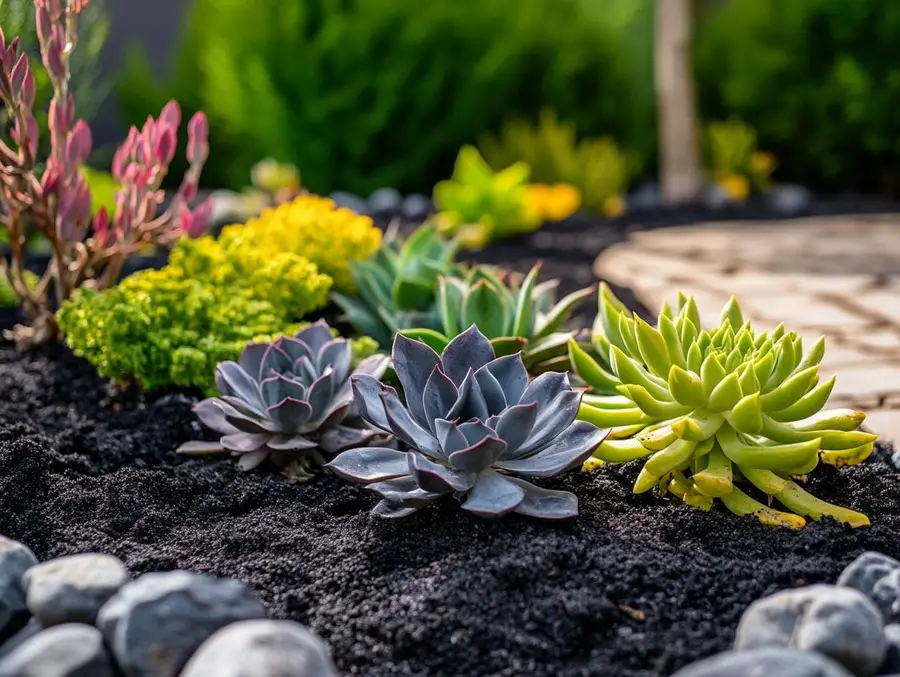
Maintaining healthy soil is key to the long-term success of your xeriscaping efforts because it directly impacts plant growth and the overall resilience of your landscape.
Regularly checking on your soil’s health will help you spot areas that need a little TLC, while using effective soil moisture management techniques ensures your drought-resistant plants get just the right amount of water.
By practicing organic gardening principles and honing in on irrigation efficiency, you can create a sustainable landscape that thrives, even when the conditions get tough.
You’ll be fostering an environment that supports biodiversity and keeps things in ecological balance.
Proper Watering and Fertilization Techniques
Implementing proper watering and fertilization techniques is crucial for keeping your xeriscape healthy, especially in those dry conditions.
These strategies help you conserve water, and they also boost the resilience of your drought-tolerant plants.
For example, if you water deeply but infrequently, it encourages your plants to grow deeper roots, which helps them compete better for moisture.
Integrating organic fertilizers into your routine can do wonders, will it assist with nutrient absorption, and also improve soil structure, creating a thriving ecosystem below the surface.
Don’t forget about mulching, either! It’s a great way to retain moisture and enhance irrigation efficiency.
When you combine these approaches, you’re setting up an environment where your plants can really thrive, even in the face of a dry climate.
Preventing Erosion and Nutrient Depletion
Preventing erosion and nutrient depletion is key to keeping your xeriscape healthy because both can seriously mess with your soil and plant vitality.
By implementing effective erosion control measures, like planting ground cover and using mulch, you can help retain soil structure and stop degradation in its tracks.
Ground covers, such as native grasses or low-growing perennial plants, are great for stabilizing the soil with their extensive root systems.
They create a protective layer that shields your soil from harsh elements.
Applying organic mulch is another win. It helps retain moisture, suppresses weeds, and even regulates soil temperature.
If you add compost or well-rotted organic matter, you’ll boost your soil’s fertility and its ability to hold water and nutrients, which is fantastic for promoting healthy growth in drought-resistant plants.
By focusing on these soil conservation strategies, you’re not just helping your plants thrive.
You’re also contributing to a robust ecosystem that keeps your xeriscape beautiful and functional.
Frequently Asked Questions
What is xeriscaping and why is soil improvement important for it?
Xeriscaping is a landscaping method that utilizes drought-resistant plants and techniques to conserve water.
Soil improvement is crucial for xeriscaping because it helps plants thrive in a low-water environment.
What are the benefits of soil improvement for xeriscaping?
Soil improvement for xeriscaping can increase water retention, reduce erosion, and promote healthy root development.
It also helps plants withstand drought and reduces the need for frequent watering, saving time and resources in the long run.
How can I improve soil for xeriscaping?
One way to improve soil for xeriscaping is to add organic matter such as compost or mulch, which can increase soil moisture and nutrient levels.
Another method is to till the soil to improve its texture and aeration, allowing water to penetrate deeper.
Can I use chemical fertilizers for soil improvement in xeriscaping?
Chemical fertilizers may provide quick results, but they can harm the environment and disrupt the balance of the soil.
It is best to opt for natural alternatives, such as organic fertilizers or compost, which can improve soil health in the long term.
How often should I amend the soil for xeriscaping?
The frequency of amending soil for xeriscaping will depend on the condition of your soil and the types of plants you are using.
Generally, it is recommended to amend the soil every 2-3 years to maintain its moisture retention and nutrient levels.
What are some common mistakes to avoid when improving soil for xeriscaping?
Some common mistakes to avoid include over-tilling the soil, using too much fertilizer, and not considering the specific needs of the plant species.
It is also important to regularly test the soil and make adjustments accordingly to ensure the best growing conditions for your xeriscaping plants.
Best Plants for Xeriscape Gardens: Hardy & Beautiful
Xeriscape Garden Styles: Easy Low-Maintenance Options
Xeriscape Gardening Techniques: Easy Low-Water Tips
Xeriscape Garden Design & Layout: Easy Water-Wise Beauty
What is xeriscaping? A beginner’s guide to drought-tolerant landscaping – Colorado State University
Related Content
Visit my Amazon Influencer Page for videos and gardening products Grow Your Own Garden

